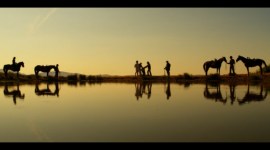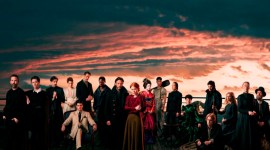
Ben Davis, the Next Big Cinematography Star?
Cinematographer Ben Davis is labeled the “comic book guy” for his work with Marvel. However, his credits are much broader than that.
When you talk to him, you find someone with a water-tight work ethic, loyalty, and professional prowess that keeps some directors coming back for more, like writer-directors Matthew Vaughn and Martin McDonagh.
For Vaughn, their first film together was seminal for both of them. They met after Vaughn’s sound man suggested Davis for his 2004’s Layer Cake with soon-to-be Bond Daniel Craig. Then three years later, Vaughn called on him again for Stardust. Vaughn’s Kick-Ass welcomed Davis back into the fold in 2007. The director then had to wait until 2021 for Davis to be free for the latest in his comedic spy franchise, The King’s Man.
McDonagh shows a similar loyalty. Every one of his films, apart from 2008’s In Bruges, was shot by Davis, including the award-strewn Three Billboards Outside Ebbing, Missouri.
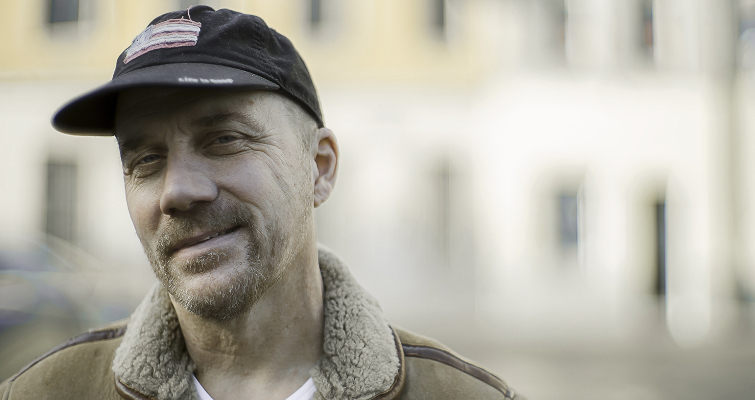
The next cinematography star?
With video essays becoming mainstream in the 2010s, it’s no longer uncommon for folk outside of the filmmaking sphere to understand not only what the DP does, but who the DP is.
Take for example this video essay on why The Batman is so beautiful. It has 1.2 million views, and the video goes into great depth as to who Greig Fraser is, and how he achieved the look of the film.
As to Davis becoming the next primo cinematographer after Greig Fraser, well, you could say, why hasn’t he been that already? Assembling the multiple departments under his control in some of the most technically complicated movies ever is already an achievement. But to attain being the cinematographer of the moment seems to hinge on being innovative, technically daring, and catching the public’s zeitgeist in a series of films.
For instance, Fraser used new LED lighting for Rogue One, where he also introduced LED screens for backdrops. He developed virtual production for The Mandalorian and then managed the darkness beautifully for The Batman. His title was also enriched by appearing in an Apple commercial for the new iPhone 13 Pro.
We talked to the Davis as McDonagh’s latest, The Banshees of Inisherin, was coming to the screen, a film that couldn’t be further from the “comic book guy” tag.
Could this be the start of Davis’s movie run toward greatness? His next film is My Policeman with pop icon of the moment Harry Styles.
The Banshees of Inisherin
Davis tries to keep his work as varied as possible, thinking anything else would be dull. “I enjoy both types of filmmaking, and the challenges are the same, but there’s usually a different approach to dealing with them depending on finances.”
Perhaps where a Marvel movie is different to, say, The Banshees, is the essential relationship you have with the VFX Supervisor and production designer. Pre-vis and storyboarding are effectively the same thing but practiced differently; knitting huge VFX sequences with live action is another level of organization and collaboration.
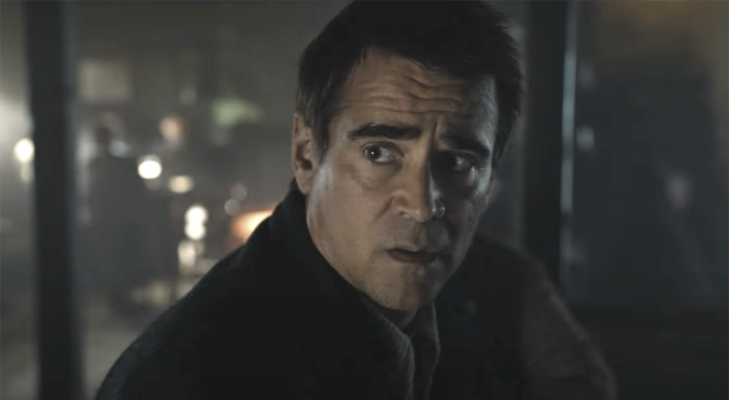
“Sometimes storyboarding can be an outline or a guideline. I’ve shot films where you look at the storyboard at the start and then never refer to them again.” But Davis followed Martin’s storyboards pretty closely. “Martin storyboarded the entire movie before we started it. They’re not great drawings, but his intent is in every image. They were very much the mind of Martin MacDonagh on the page. They were a part of the storytelling as the dialogue.”
Davis was to follow his storyboards very precisely as they were as much part of the piece as the words. But he was also to follow his instinct to photograph the beautiful islands of Inishmore and Achill (Inisherin is a fictional island), where the filming took place.
“I fell totally in love with Inishmore particularly, and I spent a lot of time at the weekends at sunrises, at night and dusk photographing the landscape. It has this innate beauty that doesn’t immediately grab you, but once you’ve been there a while, you start to appreciate it.”
He realized in a way that his task was to capture that and turn the island into a character that was fundamental to the movie. His time on Inishmore made him realize that it makes the rest of the world disappear to a certain extent. That leads into the film’s narrative of how the smallest of things can be magnified, especially the loss of friendship—it’s also about other things than that. Still, the island amplifies the mundane and banal.
Why Film Was Nearly Chosen for The Banshees
Inishmore and Achill islands are exposed to the worst weather that the Atlantic can throw at them and have been for thousands of years. They are mostly made up of flat terrain, so the landscape is all horizontal without much vertical. But away from the landscape, the story also wanted to look at the closeness of the community and the personalities that live there. The film would be shot widescreen but not anamorphic, as those lenses don’t lend themselves to confined spaces, and their close focus isn’t great.
Davis explains the shooting plan: “Martin and I would have loved to have shot film, and that was the aim at the beginning; we actually took a film camera out there to test alongside digital.”
There were many reasons to shoot film, one being that Davis found that in post, most times, film will result in a great result without too much work. Meanwhile digital footage needs to be “worked” to get to the same level.
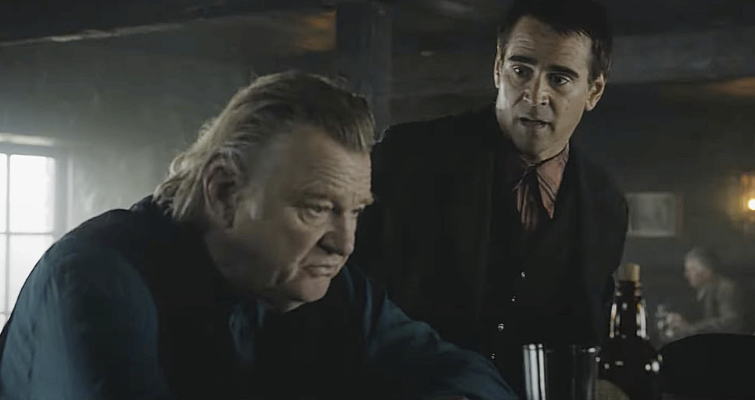
But the movie hinged on the relationships that drove the story, so cameras needed to run at length to capture those performances and especially indoors with oil lamps as practical lighting.
“We would want to keep going so Martin and the actors got the scene to where they wanted it to be. Digital was a better process for that and for low-light/level scenes. We did end up shooting some rolls of film mostly for scenic shots.”
Davis did end up using film for mastering the movie by using a process of scanning a film-out from a digital negative, which gave the final result a particular texture.
Close-ups were the key
Actors Brendan Gleeson and Colin Farrell play the friends and then ex-friends whose relationship is the heart of the film. As many of their scenes occur inside the pub, of Inisherin Davis had to present a way of finding the performances that made the movie make sense. It was an exciting exercise, says Davis. “When you cut from these textural landscapes with this abundance of rock and a sea which is in permanent turmoil, I wanted the close-ups to feel like the landscape.’
“I wanted to feel all the crevices on the face. Lighting and shaping the close-ups were a fundamental part of the film for me. These actors’ faces are endlessly fascinating, and it ended up being a lovely exercise in portraiture.”
Davis will initially look to shape the face he is filming. “I start with the eyes. Do you want to see into the eyes, or don’t you? Do you want an eye light or not? What is that eye light? A soft light or a sharp ping in the eye. The emotional response to those types of eye lights is completely different.”
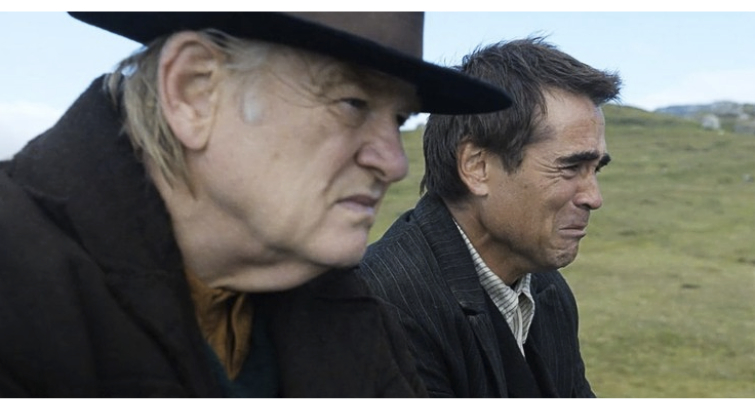
Davis explained his technique. For example, when shooting in a warm source like an oil lamp, he would put something cooler into the shadow areas to provide some color separation.
But he also used other methods like up lighting, down lighting, three-quarter angle, or lowering the camera to accentuate the narrative, which he did for Gleeson’s character. “Sometimes when you frame up on a face and it just makes sense where you put the camera,” explains the cinematographer.
The key, perhaps, to the skill of Ben Davis is that he doesn’t over-craft his cinematography. He’s done Marvel epics and brings his wealth of experience to a character-driven film like this. But saying he’s a safe pair of hands seems to do him an injustice – he’s much more than that.
His next movie is My Policeman, a story of forbidden love in the UK in the emotionally repressed 50s, with plenty of close-up faces to shape and light by Davis.
For more on cinematographers, check out these articles:



